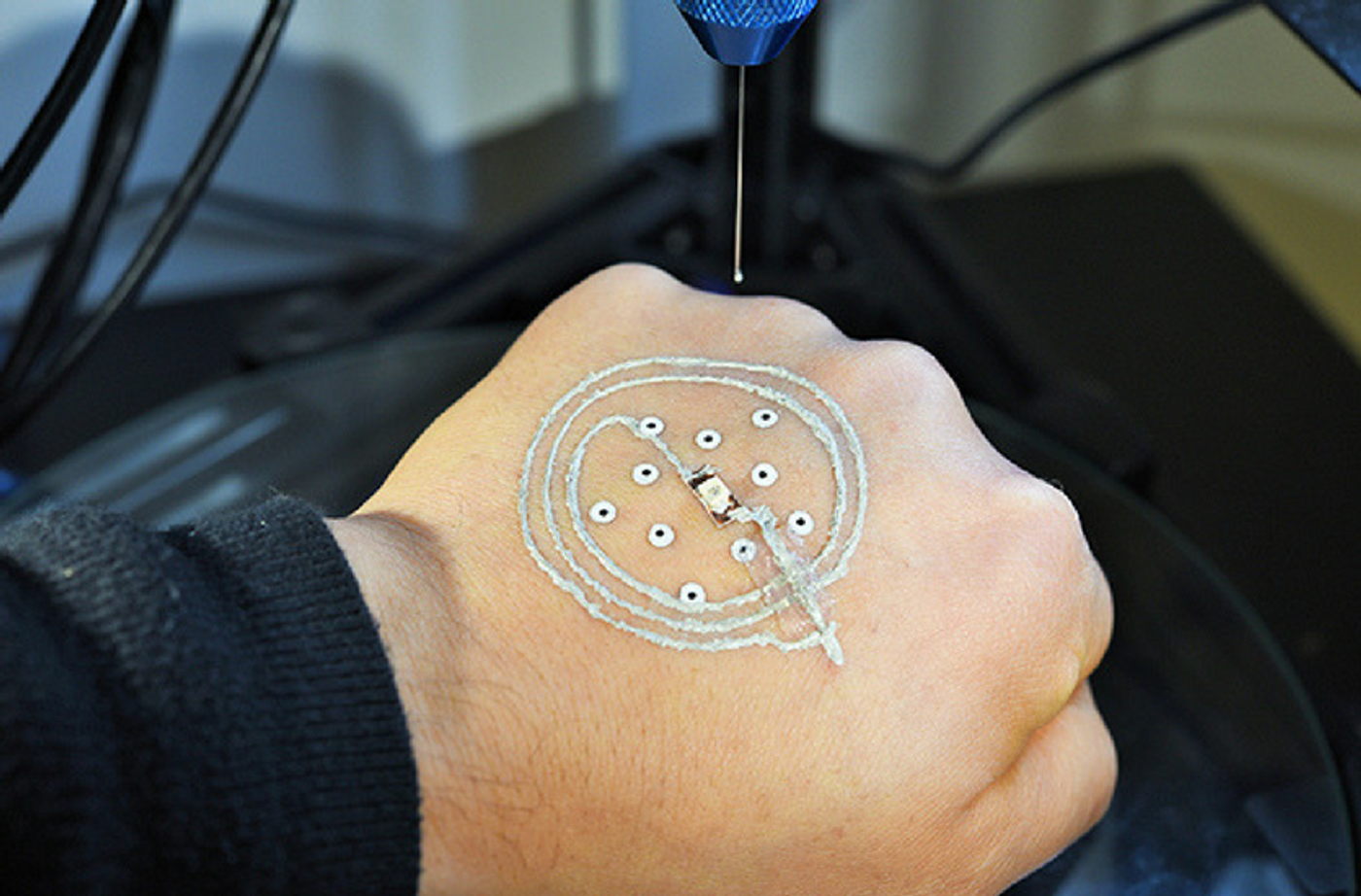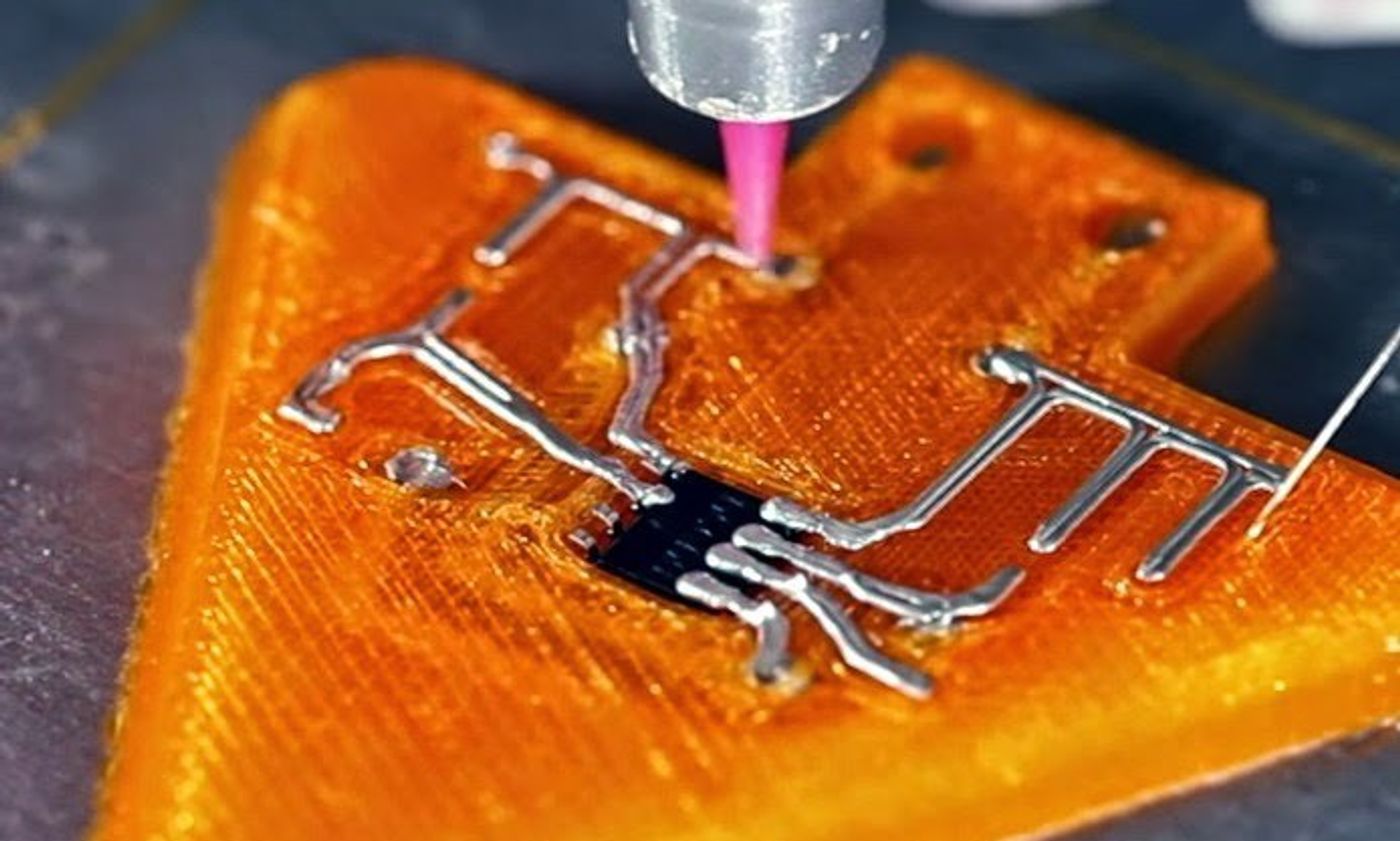3-D Electrics Printer That Prints on Skin
A group of engineering researchers from the University of Minnesota announced they had developed a customizable, low-cost 3D printer to print electronic circuits on a soft material surface such as a human hand, the first of its kind.
3D printing technology has invaded so many sectors that no one has foreseen, and in the field of electricals, there are no exceptions. The philosophy behind Electronic engineering has remained largely unchanged since the early 1900’s. The traditional method for manufacturing circuit boards required multiple steps and tools such as soldering irons, needle nose plyers, wire cutters, clamps, and multimeters. The chemicals used to create the copper paths on circuit boards are very harmful to material handlers and the environment. The whole process is inefficient in either time or cost.
The emergence of 3D printing has disrupted the electronics industry. The world’s first multi-material 3D electronics printer in was showcased in the 2015 CES and later went into the market. An incredible revolution came after that changed the way how electronics are built.
The Minnesota researchers published their study in the journal Advanced Materials.
What makes their invention so special? This 3D printer uses silver flakes as ink. It can be cured at room temperature, unlike other conductive inks that need to cure at high temperatures. Take Aluminum doped Zinc Oxide nanoparticle, for example, it is one of the most popular materials used by electricals 3D printers. For the material to be fully functional, it requires post-printing treatment: annealing at 120 Celsius or more, which would make it impossible to be applied on the human skin. What’s more, to remove the silver flake circuits one can simply peel off the electronic device with tweezers or wash it off with water.
Another “cool” innovation is this printer can adjust to small movements of the body during printing, thanks to its real-time movement adjustment program that comes with the printer.
Working with Pediatrics researchers of the same institute, the team of engineers also successfully used a bio-ink to print cells on a mouse skin wound. They hoped that the technique could lead to new medical treatments for wound healing and direct printing of grafts for skin disorders.
“We are excited about the potential of this new 3D-printing technology using a portable, lightweight printer costing less than $400,” said Michael McAlpine, the study’s lead author and a Mechanical Engineering Professor of the University of Minnesota in an internal interview. “We imagine that a soldier could pull this printer out of a backpack and print a chemical sensor or other electronics they need, directly on the skin. It would be like a ‘Swiss Army knife’ of the future with everything they need all in one portable 3D printing tool.”
3D printing electronics on a moving hand (U Minnesota)
Source: University of Minnesota










